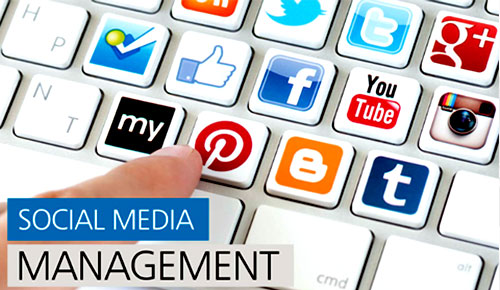Fortunately, you can advertise your webinars in a variety of ways prior to, during, and following them. To guarantee a packed house for your upcoming presentation, consider utilizing some of the promotion tactics and resources listed below.
1. Social networks
In the weeks preceding the webinar, post on Facebook, Instagram, and LinkedIn at least once every week. Tweet several times, and think about providing your audience with a hashtag to use both during and after the event.
Remember to share content regarding the event on LinkedIn groups where relevant audiences are present. Before posting, make sure to read the group’s rules as they might ask you to place the post under the Promotions tab.
2. Web page
If you would like to promote your webinar, think about including a call-to-action button in the sidebar of each webpage or a brief description on the homepage.
3. News Release
Send out a press release about the webinar to your preferred online industry journalists, especially if the topic and/or speaker are very compelling.
4. Email
You should email your database about the webinar, of course, but be sure you’re not a passing fad. Sending three emails following the webinar is the most efficient way to convert leads, as demonstrated by our prior experience with email best practices.
Track registrants and attendees using an active HubSpot list after the event. Additionally, GoToWebinar and Zoom have HubSpot integrations that allow you to connect the platforms and automatically load these lists.
5. Write a blog
Prior to and following the webinar, write a blog about it. Try to be creative, but before the presentation, a straightforward post with the webinar’s description might work. To help people understand what they would gain from attending the webinar, one option is to create a five-question Q&A with the guest speaker.Once the webinar has concluded, ask the presenter to write a post on the subject or create one based on the transcript.
6. Paid Media and Advertising
If you have money available, you might be able to advertise a webinar on Facebook, Twitter, or in a publication that caters to your industry. Increasing exposure to top-of-funnel audience members rapidly can be achieved through paid media marketing.
7. A Different Audience
Requesting that your outside speaker promote hosting a webinar with your business via email and social media posts.
Ask your partner or any other noncompetitive group that complements your product or the topic if they would be willing to co-promote the webinar with you. Give them access to the registration and attendee list in return.
8. Clients
Does the material still apply to existing clients? Don’t forget to smile and send out emails to all of your clients, encouraging them to bring a friend. A complimentary gift for the client and their friend (such as an electronic coffee gift card) can be a thoughtful addition.
9. Internal Specialists
Request a personal invitation from your internal subject matter expert to their contacts. There is never a better way to extend an invitation than personally, either by phone or email.
10. Lines of Signature
Ask each employee to include a link to your webinar, either before or after the event, in their signature line for a predetermined period of time. Consider how many people your sales team, customer service team, and account managers email in a single day. It’s free.
Provide a clickable call-to-action (CTA) image beneath email signatures for team members that can be easily added to their signatures, earning bonus points by having the image link to the webinar landing page URL. IT teams can frequently apply a low-level lift by directly pushing these images to each individual email signature, depending on email permissions.
11. Specific Websites
Microsites, also known as dedicated websites, are particularly effective when they cover a core business topic for which you plan to produce ongoing content. Building an audience for your non-branded website over time could make it a great source of leads and webinar registrations, even though it will take time to invest in both your own website and an educational one.
12. Podcasts or Facebook Live
Consider using Facebook Live or another live streaming platform to do sneak peeks or post-event wrap-ups, or consider announcing it via podcast. One excellent technique to engage people who might not be prepared to commit an hour is to have a two-minute discussion on the subject.
13. Posts on LinkedIn
Craft a unique piece on the same subject and share it on LinkedIn, including a link to sign up for the webinar at the conclusion. Thought leadership promotion within your LinkedIn network will require work, but the payoff will be substantial.
14. Pop-Ups and Sliders
A pop-up or slider promoting the webinar might be added to your website. Despite their annoying nature (which I share) they can actually be pretty useful. After the event, just remember to deactivate it.
15. Try YouTube
When it comes to event promotion, search engine optimization is significantly impacted by video. Spend some time making a promotional video before the event. Upload the first ten minutes of the webinar after it has concluded so that attendees can learn more about the topic before registering to view the entire recording.
explore more make money online tricks | Find Latest News




